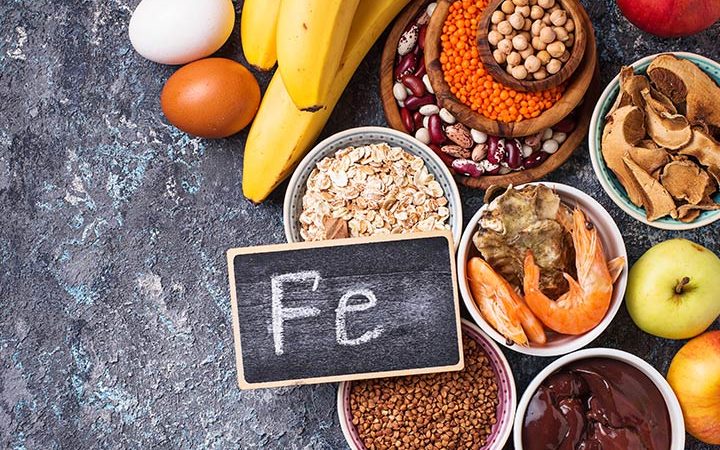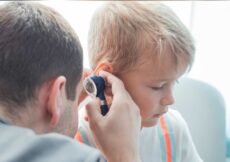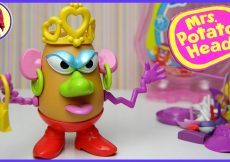Iron is an important nutrient that growing children require for several physiological functions, such as brain development. Most healthy children, eating a well-balanced diet, can get iron from their daily diet. Yet, iron deficiency is a common health problem in children that can cause iron deficiency anemia. Experts warn that iron deficiency during childhood can affect a child’s growth and cause learning or behavioral problems (1). Therefore, it is crucial to know the safe and nutritious iron-rich foods for kids.
Read on as we tell you about the functions of iron and the nutritious, iron-rich foods children can safely consume.
Why Is Iron Important For Children?
Iron performs several functions in the body, such as the production of blood cells (hematopoiesis). It also performs the following functions (2).
- Binds to globin protein and forms hemoglobin that transports oxygen from the lungs to the entire body
- Enables metabolism and converts blood glucose or sugar into energy
- Supports production of certain hormones
- Acts as a component of certain enzymes involved in collagen production, and synthesis of some neurotransmitters
- Facilitates proliferation and maturation of immune cells and supports immune system functioning
Also, iron is crucial for the proper brain development and cognitive functioning of a child.
How Much Iron Do Children Need?
Knowing your child’s daily iron needs is crucial to prevent its deficiency and excess. Here’s how much iron a child needs for their age (3).
| Age (years) | RDA (mg/day) |
| 1 to 3 | 7 |
| 4 to 8 | 10 |
| 9 to 13 | 8 |
| Adolescent boys (14 to 18) | 11 |
| Adolescent girls (14 to 18) | 15 |
Source: Dietary Guidelines For Americans 20120-2025
Iron excess or iron overload is as harmful as iron deficiency. When a child has iron excess, their body stores the extra iron in different organs, such as the liver, heart, and endocrine glands (4). Chronic iron deposition can cause life-threatening diseases and disorders over time. Iron excess in children due to dietary intake is highly unlikely. Nevertheless, it is good to know the right amount of iron your child needs and from where you can get it.
What Foods Are Rich In Iron?
Consuming various foods from different food groups is the best way to provide sufficient iron to your child and prevent iron deficiency anemia. Food offers two types of iron, heme and non-heme iron. Depending on your dietary habits (vegetarian, non-vegetarian, or vegan), you can select nutrient-dense, iron-rich foods from the following list.
Heme Iron-Rich Foods
Animal-origin foods, such as meat, poultry, and seafood, are a good source of heme iron. Heme iron is more bioavailable than non-heme iron and has an absorption rate of about 20 percent, irrespective of how you prepare and serve the food (5). Here are some heme iron-rich foods you can add to your child’s diet.
- Duck breast (skinless): Duck breast (skinless) is nutrient-dense lean meat you can serve as a part of a well-balanced diet. On average, 83 grams of duck breast with bones and skin removed can provide around 3.74g iron, 16.4g protein, and 222mg potassium with other vital nutrients (6).
- Lean beef: Beef refers to cattle meat, which is the richest heme-iron source. Besides, it can provide high-quality protein, B vitamins, zinc, and selenium (7). However, regular consumption of red meat is linked to several health risks, such as heart disease. Hence, you should add only lean beef cuts to your child’s diet. Serving 100g of 80 percent ground lean beef can provide 17.2g protein, 1.94g iron, and 270mg potassium with other vital nutrients (8).
- Turkey egg: One turkey egg (79g) can offer 135 calories, 10.8g protein, 3.2g of iron, and several other nutrients, such as selenium and phosphorus (9). In contrast, one hen’s egg (63g) can provide 7.9g protein and 1.1mg of iron with other essential nutrients (10). Try including turkey egg in your child’s diet along with other iron-rich foods.
- Chicken liver: If your child doesn’t like eating beef and pork, serve them lean poultry, such as the chicken liver instead. Chicken liver is an iron-rich food that can offer 9.2g of iron per two and a half ounces (75g) of serving (11). Besides, it can provide high-quality protein, vitamin A, vitamin B2, vitamin B12, choline, and copper.
- Seafood: Seafood can offer a significant amount of high-quality lean protein, omega-3 fatty acids, vitamin D, vitamin E, and vitamin B. On average, three ounces (85g) of salmon (Atlantic, raw, wild), tuna (fresh, yellowfin), and shrimp (raw) can provide 0.68mg, 0.65mg, and 1.8g iron, respectively (12) (13) (14). Some other seafood children can enjoy in moderation to get more iron are crab, clam, oyster, and mussels.
Non-Heme Iron-Rich Foods
Non-heme iron is less easily absorbed than heme iron. However, you can enhance its bioavailability by serving non-heme iron foods with vitamin C-rich foods, such as citrus fruits and fortified orange juice (12).
- Dark green leafy vegetables
Spinach, broccoli, bok choy, asparagus, Brussels sprouts, and romaine lettuce are a few dark green veggies that can provide sufficient iron and several micronutrients to your child. Experts advise children between two and 18 years to consume one to three cups of veggies each day. Curries, soups, casseroles, sandwiches, and wraps are dishes that can help you add plenty of veggies to your child’s meals.
- Dried fruits
Dried fruits, such as prunes, raisins, apricot, figs, and dates, are nutrient-dense foods that can provide a significant amount of iron. Children between two and eight years need 1 to 2½ cups of fruits each day. According to experts, you can add half a cup of dried fruits to your child’s daily diet (equivalent to one cup of fruits) to offer them iron-rich meals (15).
- Soy foods
Soy or soybean is a protein-dense food that contains high amounts of iron. According to USDA, half a cup of cooked soybeans can offer 4.4mg iron (12). Experts advise consuming fermented soy products, such as tofu and tempeh, as fermentation increases the iron’s bioavailability from soybeans.
- Beans
Beans are protein-dense foods that can give your child a high amount of iron per serving. For instance, one cup of cooked lima beans can provide 4.2mg iron, whereas half a cup of white beans can give 3.3mg iron. A cup of cooked green peas can offer 2.5mg iron, whereas a cup of cooked chickpeas and cowpeas can give 2.4mg and 2.1mg iron, respectively (12).
- Mushrooms
Mushrooms are edible fungi with a rich nutritional profile. One cup of cooked mushrooms can provide 2.7mg iron (12). You can prepare mushrooms in different forms and serve them to your child across meals to fulfill their iron needs.
- Nuts and seeds
Nuts and seeds, such as cashew, pumpkin seeds, and sesame seeds, contain considerable amounts of iron per serving. For instance, one ounce (approx. 28g) of cashew can offer 1.9mg iron, whereas half an ounce of pumpkin and sesame seeds can give 2.1mg iron (12). Feeding whole or chopped nuts and seeds to children younger than four years can raise choking risk. Therefore, stay cautious and preferably feed nuts and seeds to younger children in powder form.
- Whole grains
Whole grains, such as whole oats, whole wheat, and brown rice, have three parts — bran, germ, and endosperm. Bran is the outermost layer that contains several vital micronutrients, including iron. Feeding a slice of whole wheat bread and a cup of whole wheat spaghetti can provide about one milligram of iron, which can add to your child’s iron needs.
- Iron-fortified foods
Iron is used to fortify or enrich several foods, such as breakfast cereals. Half a cup of iron-enriched oatmeal can provide 5mg iron, while one-fourth cup of fortified bran flakes can provide about 2.8mg iron, approximately (12). Check food labels carefully and buy iron-fortified cereals.
How To Include Iron In Your Child’s Diet?
Here are a few tips to include iron-rich foods in your child’s daily diet.
- Consult a nutrition expert and create a meal plan containing heme and non-heme iron-rich foods. If your child is a picky eater, check with your doctor if they need iron supplementation to fulfill their iron needs. However, remember, most healthy children, eating a well-balanced diet, don’t need iron supplements.
- Read the labels carefully and select iron-fortified foods, such as iron-enriched bread, pizza base, and pasta. It’s vital as cereals usually contain less iron. Fortification is, therefore, the best way to prevent iron insufficiency.
- Compare food labels and pick foods that are a good source of iron. Foods that provide 10 to 19 percent daily value (DV) or more for a nutrient are considered a good nutrient source (16). Remember, the daily values given on the pack will be for adults, and these values will be higher for children.
- Use cast iron pans and pots for cooking to enhance the iron content of the foods. Also, pair vitamin C-rich foods with non-heme foods to enhance iron absorption. In the same way, you can pair heme iron-rich foods with non-heme iron foods to raise the overall iron content of a meal.
- Avoid over-consumption of milk as the calcium found in milk can interfere in iron absorption and reduce its bioavailability. Similarly, reduce or limit intake of beverages, such as coffee and tea, as they contain tannins, which can also hamper iron absorption.
Iron is an important micronutrient that the body needs to perform several vital functions. Generally, pairing heme and non-heme iron foods helps in increased iron absorption. However, if your child is a vegan, you can feed them plenty of non-heme iron-rich foods with vitamin C-rich foods to enhance iron absorption. If you suspect your child isn’t getting enough iron even after feeding well, consult your healthcare provider for iron supplementation.
References:
MomJunction’s articles are written after analyzing the research works of expert authors and institutions. Our references consist of resources established by authorities in their respective fields. You can learn more about the authenticity of the information we present in our editorial policy.
- Iron Deficiency Anemia.
https://www.mottchildren.org/posts/your-child/iron-deficiency-anemia - Hemoglobin and Functions of Iron.
https://www.ucsfhealth.org/education/hemoglobin-and-functions-of-iron - Dietary_Guidelines_for_Americans-2020-2025.
https://www.dietaryguidelines.gov/sites/default/files/2021-03/Dietary_Guidelines_for_Americans-2020-2025.pdf - Lisa A. McDowell et al.; (2021); Iron Overload.
https://www.ncbi.nlm.nih.gov/books/NBK526131/ - Pump Up the Diet with Iron.
https://www.healthychildren.org/English/ages-stages/teen/nutrition/Pages/Pump-Up-the-Diet-with-Iron.aspx - Duck, wild, breast, meat only, raw; FDC ID: 174469.
https://fdc.nal.usda.gov/fdc-app.html#/food-details/174469/nutrients - What’s the beef with red meat?.
https://www.health.harvard.edu/staying-healthy/whats-the-beef-with-red-meat - Beef, ground, 80% lean meat/20% fat, raw; FDC ID: 174036.
https://fdc.nal.usda.gov/fdc-app.html#/food-details/174036/nutrients - Egg, turkey, whole, fresh, raw; FDC ID: 172192.
https://fdc.nal.usda.gov/fdc-app.html#/food-details/172192/nutrients - Egg, whole, raw, fresh; FDC ID: 171287.
https://fdc.nal.usda.gov/fdc-app.html#/food-details/171287/nutrients - Iron in Foods.
https://www.healthlinkbc.ca/healthlinkbc-files/iron-foods - Food Sources of Iron.
https://www.dietaryguidelines.gov/resources/2020-2025-dietary-guidelines-online-materials/food-sources-select-nutrients/food-1 - Fish, salmon, Atlantic, wild, raw; FDC ID: 173686.
https://fdc.nal.usda.gov/fdc-app.html#/food-details/173686/nutrients - Fish, tuna, fresh, yellowfin, raw; FDC ID: 175159.
https://fdc.nal.usda.gov/fdc-app.html#/food-details/175159/nutrients - Fruits.
https://www.myplate.gov/eat-healthy/fruits - Food labeling.
https://medlineplus.gov/ency/article/002459.htm
Recommended Articles
The following two tabs change content below.




































